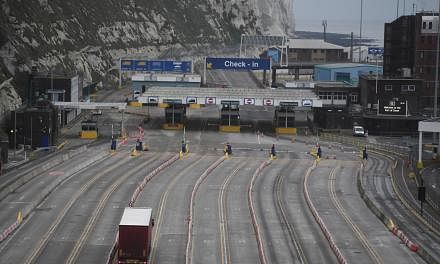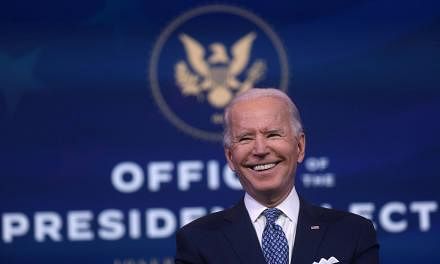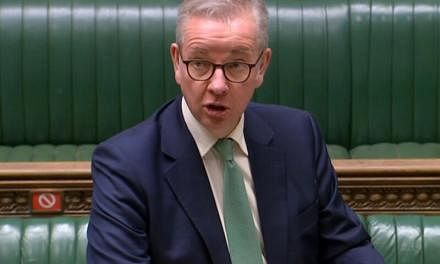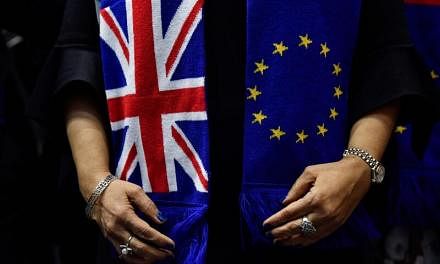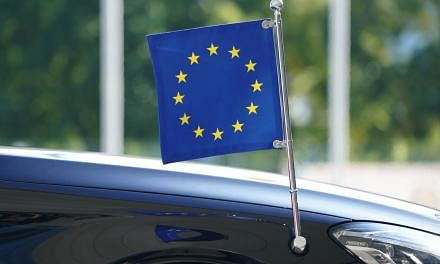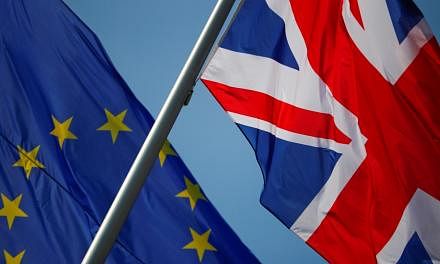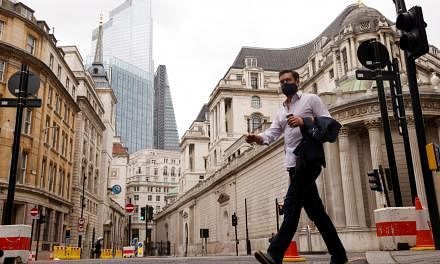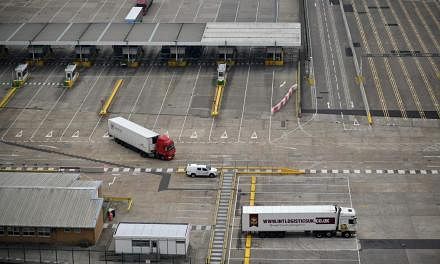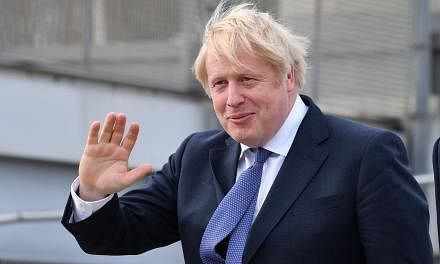LONDON (REUTERS) - British lawmakers will wrest control of the Brexit process for a second day on Monday (April 1) in order to try to find a majority for an alternative way forward that could break the parliamentary deadlock over Prime Minister Theresa May's proposed deal.
The first phase of so-called indicative votes held on March 27 did not show majority support for any options, but lawmakers hope a second round, likely on a narrower range of options, could see parliament coalesce behind a way forward.
Since the last round of votes, Mrs May's deal has been rejected for a third time. Below is how the process will work.
WHAT OPTIONS COULD BE VOTED ON?
Last week, speaker John Bercow selected eight Brexit options to be put to a vote, from a list of 16 proposals put forward by lawmakers.
Lawmakers have put forward nine proposals for Monday, most of which are the same or similar to last week's, and Mr Bercow will announce mid-afternoon which will be has chosen to be voted on.
Below are the options which have been put forward:
A) Unilateral right of exit from backstop - Mr John Baron calls for Britain to leave the EU on May 22 with Theresa May's withdrawal agreement amended so that Britain could unilaterally exit the Northern Irish backstop.
The same proposal from Mr Baron was not selected for a vote last week.
B) No deal in the absence of a withdrawal agreement - Mr John Baron calls for Britain to leave the EU without a deal on April 12, if parliament cannot approve a withdrawal agreement.
An almost identical proposal from Mr Baron last week was rejected by 400 votes to 160.
C) Customs Union - Mr Kenneth Clarke calls on the government to ensure any withdrawal agreement and political declaration negotiated with the EU includes a commitment to negotiate a permanent and comprehensive UK-wide customs union, and to enshrine this aim in law.
The same proposal from Mr Clarke last week was rejected by just 6 votes, with 265 lawmakers supporting it and 271 opposing it.
D) Common Market 2.0 - Mr Nick Boles calls for an enhanced Norway-style deal which would include membership of the EU's single market as well as a customs arrangement with the EU.
While Mr Boles has tweaked some of the detail, a broadly similar proposal he put forward last week was supported by 189 lawmakers and opposed by 283.
E) Confirmatory public vote - Mr Peter Kyle calls for a confirmatory referendum to approve Brexit deal before it is ratified by parliament.
The same proposal, then put forward by Labour lawmaker Margaret Beckett, was supported by 268 lawmakers and opposed by 295.
F) Public vote to prevent no deal - Mr Graham Jones calls for a public vote if it were necessary to prevent Britain leaving the EU without a deal.
This is a new proposal, which was not submitted last week.
G) Parliamentary Supremacy - Ms Joanna Cherry Says that if Britain has not ratified an exit deal within two days of the day it is due to leave the EU, the government should seek a further extension to the Article 50 negotiating period.
If a Brexit delay has not been agreed by the day before exit day, the government should seek parliament's approval for leaving without a deal and if that approval is not given, the government should revoke Article 50 to cancel Brexit.
This is an expanded, more detailed version of a proposal put forward by Ms Cherry last week. That proposal was supported by 184 lawmakers and opposed by 293.
H) EFTA and EEA - Mr George Eustice calls for Britain to remain a member of the European Economic Area (EEA) and seek a further short delay to Brexit while Britain rejoins the European Free Trade Association (EFTA).
A very similar proposal put forward by Mr Eustice last week got just 64 votes in favour, and was opposed by 377 lawmakers.
HOW WILL LAWMAKERS VOTE?
The voting is expected to work in the same way as it did last week, when the options selected by the Speaker were printed on a ballot paper and lawmakers were asked to vote "aye" or "no"to each of them. They were able to vote for as many of the proposals as they wished.
WHAT TIME WILL THE RESULT BE ANNOUNCED?
The debate is due to end at 1900 GMT and lawmakers will then be given 30 minutes to record their votes.
The Speaker will announce the results once they have been counted. Last week this took just over two hours.
DO THE GOVERNMENT HAVE TO ACCEPT THE RESULT?
The votes are not binding on the government, but Justice minister David Gauke said on Sunday that it would have to"consider very carefully the will of parliament."
Asked if Mrs May would have to go back to Brussels and seek a customs union if parliament voted for it, Mr Gauke said: "If parliament is voting overwhelmingly against leaving the European Union without a deal but is voting in favour of a softer Brexit, then I don't think it is sustainable to say we will ignore parliament's position and leave without a deal."
Mr Oliver Letwin, the Conservative lawmaker behind the process of votes, has previously said that if parliament succeeded in finding a majority for a way forward, he hoped the government would accept that outcome but if it did not, then lawmakers would bring forward legislation seeking to force it to do so.
He has set out plans for lawmakers to take control of parliamentary time again on April 3.

